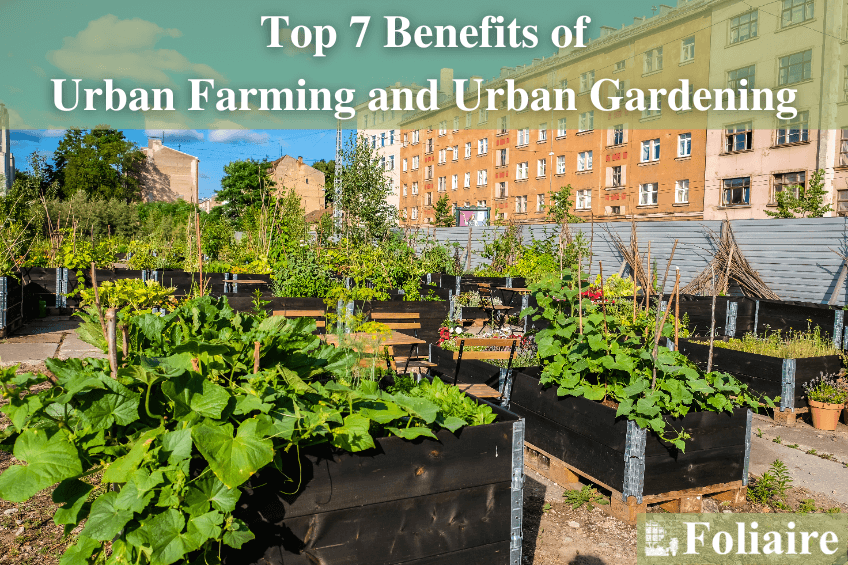City Blooming - The Facts
City Blooming - The Facts
Blog Article
3 Easy Facts About City Blooming Explained
Table of ContentsCity Blooming Fundamentals ExplainedThe 10-Minute Rule for City BloomingThe Greatest Guide To City BloomingFascination About City BloomingThings about City Blooming
Fascinated in expanding food for sale in the City of Chicago? Below is a checklist of regularly asked questions concerning the rules and policies that farmers should think about when preparing an urban agriculture project.
The zoning modification does not modify any type of various other codes taking care of composting, structure permits, purchasing or leasing City possessed residential property, organization licenses or ecological contamination. There are existing codes that control these issues and they remain in complete effect and might be applicable to your task. Community yards are commonly possessed or handled by public entities, civic companies or community-based organizations and maintained by volunteers.
Urban farms grow food that is intended to be offered, either on a not-for-profit or for-profit basis. Because of their business objective, metropolitan farms call for a business license. Yes. An area yard is enabled to offer excess produce that was grown on website if the sales are accessory or secondary to the yard's primary function defined over.
Some Of City Blooming
The amount of compost product can not go beyond 25 cubic yards at any provided time according to the standards in 7-28-715 of the City's Municipal Code. Due to the fact that the soil at most new garden websites requires changing, compost, soil, timber chips, or other materials can be gotten to build or improve the growing space.

If a structure permit is needed after that the hoophouse will be thought about an accessory building. You can learn even more about the structure authorization requirements by calling the Department of Structures. The 25,000-square-foot size restriction is intended to protect against a single community garden from dominating a provided block or interfering with the block's existing domestic or business character.
The limit does not use to yards situated in Public Open Room (POS) districts. Can there be more than one community garden that is 25,000 square feet on a single block? Fence is not required, however, yards that have huge vehicle parking areas might be called for to install fencing or various other landscape design functions.
The Buzz on City Blooming
B1 & B2 districts call for that all commercial use activities be carried why not try here out indoors. Is fencing required for city ranches? Fences might be called for, along with landscape design and screening, for specific auto parking areas and outdoor job or storage locations depending on location and the certain activity taking area.
Yes. Urban farms need structure authorizations and zoning approvals prior to construction. Other types of city review may be needed depending upon specific structures, activities, size, landscaping, licensing, public heath and stormwater administration concerns. Most of these demands are recognized in the job design or permitting procedure, however, the candidate may be responsible to separately determine specific licenses or allows that may be needed.
Yes. The sort of permit is established by what is taking place at the site. The Department of Business Affairs and Consumer Security can aid establish the particular sort of business permit that's needed. Yes. Off street parking is required for the majority of industrial tasks in Chicago. The needed variety of garage is based on the variety of employees dealing with site and not the square footage of the growing space.
The 2-Minute Rule for City Blooming

Yes. A city farm can market compost product created on site, nonetheless, the procedure must comply with the laws in 7-28-715 of the Chicago Municipal Code. Yes. Aquaponic systems are enabled indoors on metropolitan ranches in lots of zoning districts. A zoning review and building license is needed in order to install frameworks or systems and a company permit is required as explained above.
As much as five hives or swarms of honey bees might be kept as an accessory use. Beekeepers need to register with the Illinois Division of Agriculture. To learn more about the recommended zoning amendment you might get in touch with the Division of Housing and Economic Development, Bureau of Planning and Zoning at 312.744.8563.
, which takes area in rural areas at the side of suburbs.
Things about City Blooming
It can involve a motion of natural farmers, "foodies" and "locavores", that look for to form social networks based on a common principles of nature and community holism. These networks can develop using official institutional assistance, becoming integrated right into regional town planning as a "transition town" motion for sustainable urban development.
Some of the very first evidence of urban agriculture comes from Mesopotamia.
Report this page